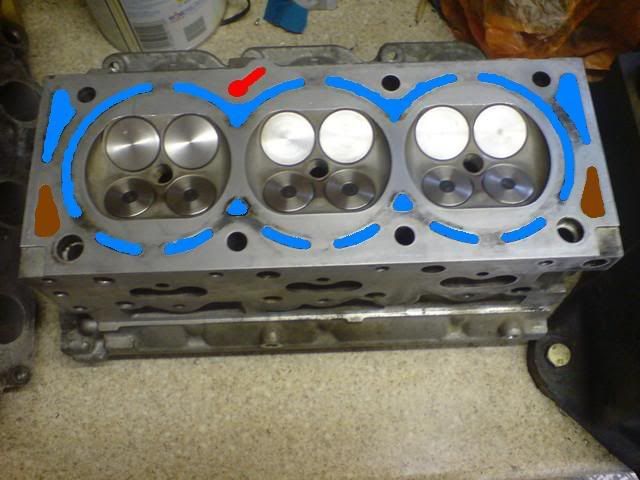Thats a very bad mechanic and a very bad diag!
So far hes spent a big wedge of cash based on poor information.
As a pointer, lets consider a cylinder head face:

The above is a V6 head although most cylinder heads on modern vehicles are similar.
The blue areas are coolant passages, under normal running, these are pressurised but drop to approx atmospheric as the engine cools down.
The brown areas are oil return passages where the oil drops back to the sump. Thanks to the breather system, these are under a slight vaccum (assuming breathers are not blocked!).
The small red area is THE only place where pressurised oil passes and is nicely away from anything other than the head edge. This is protected by a copper insert in the gasket.
So to get oil in the coolant via a failed headgasket we need the strongest bit going (basicaly a copper O ring) to fail and the oil to travel a reasonable distance to the water.
Now if the heads were to crack it would most likely occur around the valves, this would potentialy allow the coolant into the combustion chamber but certainly not the oil.
Clearly the person doing the work thus far is lacking a grasp of the basics!
For this scenario, the actual answer is a failed oil cooler which is around three hours work and around 150-200 in bits.

 Author
Topic: both heads cracked (Read 2327 times)
Author
Topic: both heads cracked (Read 2327 times)

